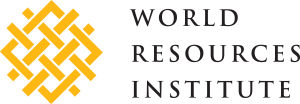There is increasing interest among Indigenous Peoples and local communities (as well as civil society organizations) around the world in mapping the boundaries of their lands. There are many reasons for this surge in mapping, including the importance of maps in developing local land-use management plans, the common requirement of maps to receive formal documentation from the government, the low (and still declining) costs of new mapping technologies (GPS, drones, etc.) and procedures, and new dedicated funds from development assistance agencies to support the costs of mapping of community lands.
Advocates and practitioners argue that maps increase tenure security, and help Indigenous Peoples and communities protect their lands from outsiders and arbitrary expropriation. There is a growing body of anecdotal evidence and a large number of case studies from Latin America, Africa, and Asia that substantiate the important role maps play in tenure security. This session will convene a panel of four experts to discuss the role of community maps in tenure security.
Each presenter will be asked to speak specifically on how Indigenous Peoples and communities use their maps to protect their lands. Following the panel presentations, the floor will be opened for questions and answers and for discussions. The output of the session will be a list of how communities use maps to secure their lands.
Speakers:
Mr. Joe Eisen, Research and Policy Coordinator, Rainforest Foundation UK
Ms. Ghanimat Azhdari, Senior Expert – Participatory GIS, CENESTA/ UniNOMAD
Mr. Richard Smith, Director, Instituto del Bien Común
Mr. Téodyl Nkuintchua, Programs Coordinator, Centre pour l’Environnement et le Développement (CED)
Organizers: World Resources Institute, Instituto del Bien Común, and The Center for Sustainable Development (CENESTA)
*This session will be held in English only.





